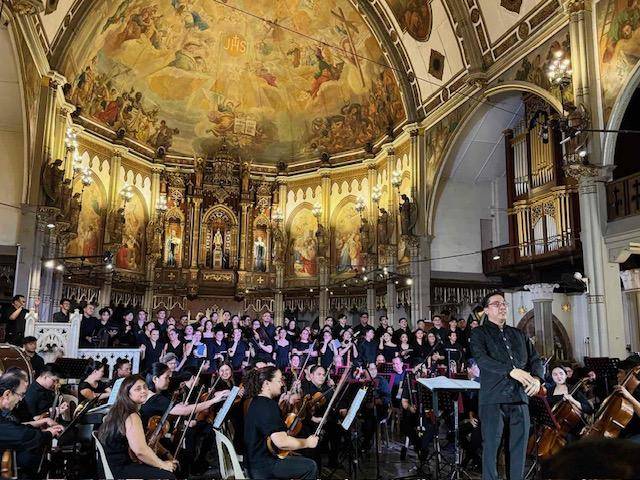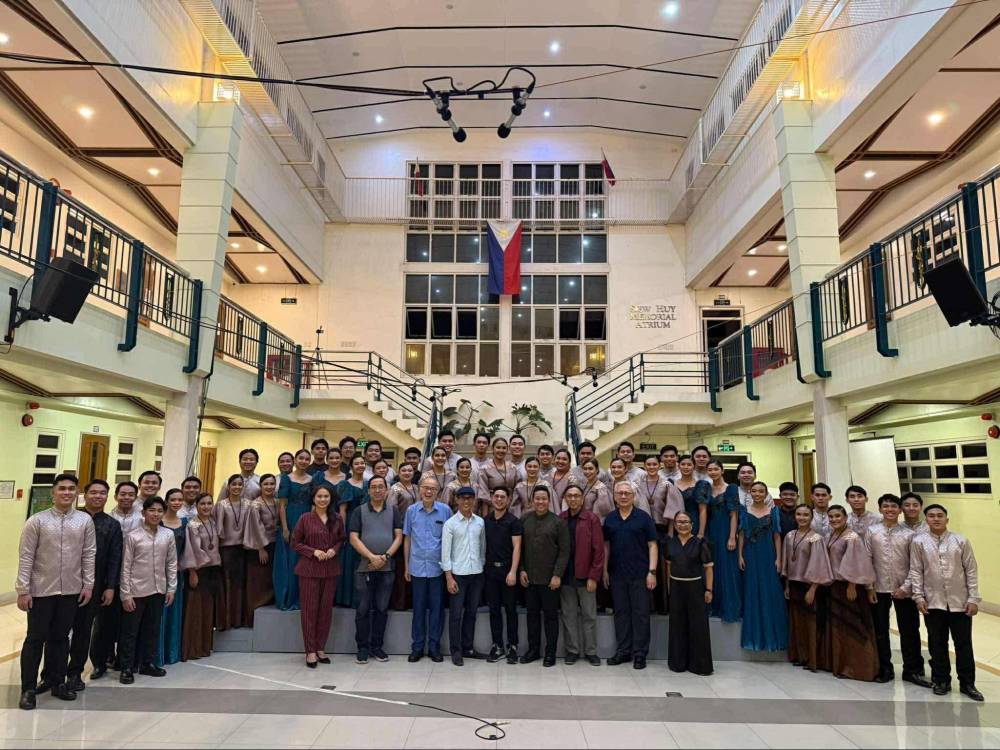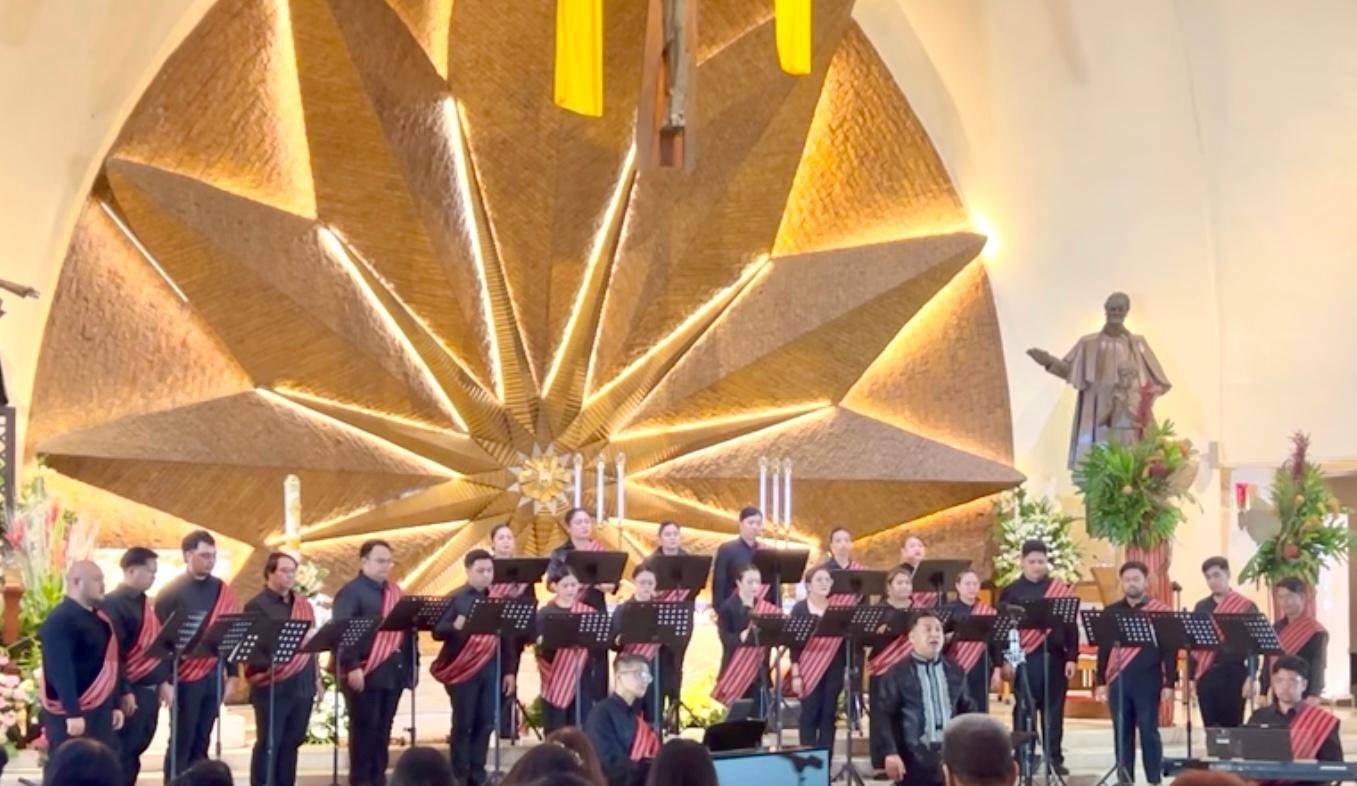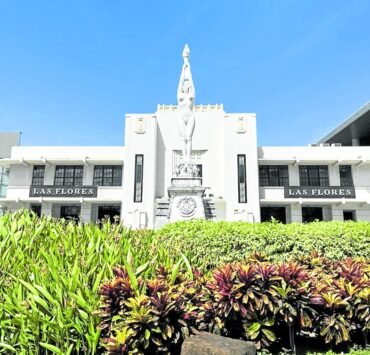Triumphant debut for 3 new choral pieces

Three new choral works, composed by three Filipino composers, took center stage recently, marking their separate premiere performances in and outside Manila.
The performances were done as final requirements for the attainment of the degree of Doctor in Musical Arts, major in Choral Conducting, from the St. Paul University-Manila College of Music and Performing Arts, of three aspiring choral conductors enrolled in the university, and actively engaged in choral conducting.
The elevation of choral conducting to the doctoral level meets the demands and challenges of the profession, as choral singing in the country has reached a feverish pitch. Many choral groups go out of the country to participate in international competitions. These challenges are squarely faced with rigorous academic training, and writing or composing new works on the part of composers to expand the country’s choral literature, and in keeping with the sterling international standard for choral singing and conducting.
The lecture-recitalists, in order of their respective performances, are Lester Delgado, conductor of Vocalismo Choral Group; Angelito E. Ayran Jr., conductor of the Centro Escolar University (CEU) Singers Manila; and Ramon Molina Lijauco Jr., conductor of the Philippine Meistersingers. Under their meticulous supervision, their respective choirs garnered top prizes in both local and international choral competitions, and mounted local as well as international performances.

These indefatigable conductors are all under the tutelage of dynamic choral pedagogue Dr. Joel P. Navarro. The composers whose works were performed are young and have garnered national as well as international accolades.
The first lecture-recital was given by Lester Delgado last May 23 at the Don Bosco Parish in Makati. Delgado tackled the latest edition (2024) of the ethnic inspired work of Dr. Eudenice Palaruan (b. 1968), “Pastol (Shepherd).” The work, in the words of Dr. Navarro, is “multilingual,” and “combines various elements of Philippine music, Christian spirituality and Western music. “
Well-honed voices
One was awed listening to the well-honed voices of the choir chanting with dynamic intensity and a high sense of spirituality, integrating ethnic cultural traditions from the Cordilleras, such as in “Infaag,” the first movement of the work that made use of a Kankana-ey melody and “Salidumay.” The second movement set the second verse of Psalm 23, and the language used was Visayan, making use of the Visayan lullaby “Ili-ili Tulog Anay,” set in the comforting pastoral rhythm of the shepherds.
Overall, Palaruan’s music evoked a high sense of spirituality and global experiences of hope, conflict, and heavenly bliss, as conductor Delgado pointed out in his lecture.
The performance was enhanced by the well-blended voices of the choir, assisted by percussionists, a boy soprano, organ and piano, and with the participation of the audience. Vocalismo Choral Group will embark on a European tour from July 3 to July 21 this year.
The second recital came three weeks after, on June 16, at the historic Abbey Church of Our Lady of Montserrat of San Beda University on Mendiola Street, just a stone’s throw from the Centro Escolar University, where the recitalist, Ayran, heads the university’s Conservatory of Music.
The CEU Singers Manila was joined by The Eastern Chamber Singers of Anna Tabita Abeleda-Piquero, and The Servus Dei Vocal Ensemble of Renz Jerson B. Cuevas of the CEU conservatory of Music.

“Paschal Tide CB 25 (MMXXV)” composed by Joed Balsamo (b. 1979), was Ayran’s piece de resistance. The same format was followed, marked by a lecture on the piece, and performances of some passages by the choir.
The formidable work is a concert cantata that made use of National Artist for Literature Bienvenido Lumbera’s translation in Tagalog of “Lumen Christi” in the opening, followed by the “Exultet,” all sang a cappella or without accompaniment following church tradition.
The third piece that followed “Gloria” burst into majestic splendor as the choir was joined by no less than the Manila Symphony Orchestra that provided collaboration. The chapel reverberated with a reverent solemnity as the choir sang the rests of the parts that made up the entire work, such as “Alleluia,” “Vidi Aquam,” “An Easter Prayer,” and “Victimae Paschali Laudes.”
A halo over one’s head
Soloists were soprano Rhina Paula Palma-Cruz and tenor John Rimher Manubay.
As the last note faded out, one felt a halo shining over one’s head, as everyone was touched by the religious splendor of the piece.
The composer, Balsamo, was acknowledged with thunderous applause from the very appreciative audience.
The last recital was held very recently, last June 22, at the Siew Huy Memorial Atrium, Alumni Hall of the College of Medicine of the Adventists University of the Philippines in Silang, Cavite.
Another new choral work was performed by another formidable conductor, Lijauco, who conducted his choir, The Meistersingers. The new choral work, “Gratiarum,” was composed by the youthful composer, Ian Gabriel Torres Corpuz ( b. 1995). It is a Thanksgiving Mass, made up of nine sections, written bilingually in Latin and Filipino.
Like in the previous performances, Lijauco highlighted the work through a lecture, and illustrated some points by performing passages from the work.
It is a “a reinvention and reimagining of the Mass art tradition” that contains abundant musical innovations, and highlights the enduring power of sacred music. The work, said Lijauco, “bridges past and present, liturgy and art, devotion and creativity.”
One truly appreciates the solid timbre of the choir. Seated just a few feet away, one could even hear the breathing of the choristers, and truly appreciate their wide dynamic range, from piano to fortissimo as they stood for almost an hour singing “Gratiarum” with such solemnity and enduring majesty.
Indeed, the work is massive, almost rendered a cappella, with minimal piano collaboration provided by Evelyn Sadil-Salibio.
In all three performances, one noted the presence of big, truly appreciative audiences who were choral music lovers, many of whom are choristers.
Truly, the appreciation of choral music has arrived, and may it continue to thrive!
Congratulations!

















